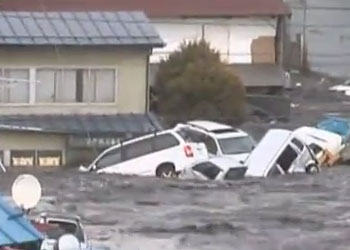When northeast Japan was hit by tsunami following a devastating earthquake two weeks ago, we provided an account of the direct impact suffered by Japanese consumer electronics companies including Sony, Panasonic and Toshiba. However, a fortnight later more details have emerged regarding the potential disruption to the supply chain of flat-screen LCD HDTV production – affecting even non-Japanese manufacturers – courtesy of the smart folks over at DisplaySearch.

The California-based display market research and consulting firm has listed several key materials used in the making of LCD TVs, which are likely to run low as a consequence of the natural disaster. Nitrogen Trifluoride (NF3), a gas that is used to clean Chemical Vapour Deposition (CVD) chambers during the manufacturing of TFT LCD panels, was already in short supply prior to the earthquake/ tsunami as gas producers refrained from expanding production capacity due to depressed prices. After Shibukawa city (that houses an NF3 plant owned by Kanto Denka Kogyo which together with Mitsui Chemicals and Central Gas accounts for 30% of the world’s NF3 supply) was hit by the earthquake and ensuing electricity power blackouts, DisplaySearch is predicting a temporary NF3 gas shortage at the very least.
Two Japanese firms, JX Nikko and Mitsui, in combination hold more than 70% share of the global Indium Tin Oxide (ITO) market: the material is a transparent conductor used widely in TFT LCDs. While Mitsui has escaped any direct impact from the earthquake, JX Nikko’s ITO factory – only 80km away from the Fukushima nuclear power reactor – is shut down at this time of writing, prompting fears about supply constraints.
Supply of green pigments used in colour filters may also be affected, as Japanese organic pigment supplier DIC (formerly Dainippon Ink and Chemicals) hinted that its production has been hurt by the earthquake. It appears that connectors made by Hirose and JAE, which transmit power and video signals in LCD television modules, may see some shortages too. That said, DisplaySearch does not expect any significant production delays in the very short term, because most LCD TV panel makers typically stock at least a few weeks’ worth of inventory, which buys them some time to source these materials from alternative suppliers.
Source: DisplaySearch Blog